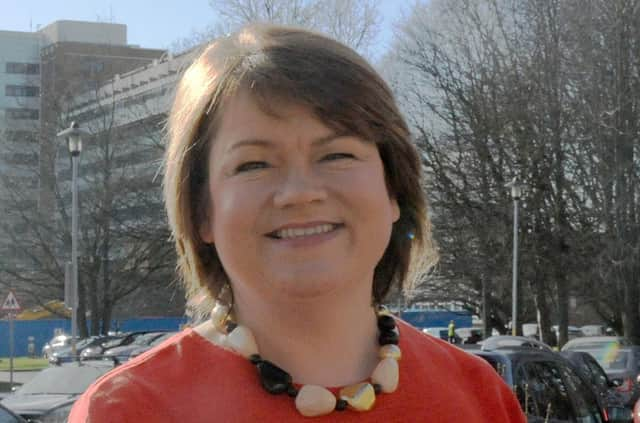Altnagelvin last hit 4-hour A&E target in 2015, committee told


SDLP Councillor Rory Farrell raised the issue during a presentation of the Western Health & Social Care Trust's Service Delivery Plan and Resilience Plan to Address Winter Pressures and any Subsequent Waves in COVID-19 Pandemic to Derry and Strabane’s Health and Community Committee.
Councillor Farrell said: “The target is 95% of people that enter an emergency department are either treated, discharged or admitted within four hours.
Advertisement
Hide AdAdvertisement
Hide Ad“The latest data for Altnagelvin was around 42% so the 95% target was missed by an absolute mile.
“In fairness, no type one emergency department was anywhere near the target at all but Altnagevin was the second worst in the North after the Royal Victoria.
“There are emergency departments across the North which are busier than Altnagelvin which get a higher percentage in terms of people being admitted, discharged or treated within four hours.
“What is it going to take to actually meet that target? People are frustrated when they have to sit in emergency rooms. I sat there last year with a family member for about nine hours and it was really, really difficult so it's a challenge for the person who needs treatment and the people along with them as well.”
Advertisement
Hide AdAdvertisement
Hide AdResponding, Teresa Molloy, Western Trust Director of Performance & Service Improvement said: “I cannot give you an answer to that. The last time we were in the 95% in Altnagelvin hospital was probably around 2015. I can recall us clearly doing our 100% day in 2014.
“The demand on our emergency departments has significantly increased in recent years and in Altnagelvin we are commonly now seeing over 200 people a day and 100 people a day in South West Acute.
“Those are significantly higher attendances than we would have seen five or six years ago. We also have in Altnagelvin hospital a very constrained emergency department footprint and that is why at times it is extremely difficult to avoid a very congested department.”
Councillor Farrell also spoke about the numbers of people of all ages on mental health waiting lists.
Advertisement
Hide AdAdvertisement
Hide Ad“Massive improvements have been made in terms of mental health waiting lists over the last year," he said. “In terms of children and adolescents the waiting list has gone down and down, it was about 100 people waiting to access the service over a nine-week waiting time but that has crept up in recent months and there are around 400 young people waiting over nine weeks to access the service.
“In terms of adults waiting to access the service, again massive improvements compared to last year but the numbers have started to creep up again.
“The real difficulty in the Western Trust with regards to mental health waiting lists is psychological therapies. There are nearly 1400 people waiting over 13 weeks to access psychological therapies.
“I've been a councillor for two and a half years and it has grown every single month and it has continued to grow and snowball and nothing seems to be getting done about this.
Advertisement
Hide AdAdvertisement
Hide Ad"What are the barriers to delivering on the target, specifically around psychological therapies, what is the trust going to do differently to ensure people get the support in a timely manner? You’ve shown previously inroads can be made in adult mental health, inroads can be made in children and adolescents but no improvement has been made at all in psychological therapies."
Ms Molloy replied: “The reason why waiting times and the numbers have increased are around three issues.
“The fact we do have what we call a demand and capacity mismatch, we have more demand than we have resourced or commissioned capacity within our service at this time.
“Particularly at this part of the pandemic we have a preponderance of crisis referrals which those services need to focus on and that means that planned referrals or more routine referrals are deprioritised or reprioritised and that does affect waiting times and numbers waiting.
Advertisement
Hide AdAdvertisement
Hide Ad“We also have workforce gaps and workforce pressures and our own staff are not immune to Covid and the pressures and stresses of Covid on their own health and well being.
“We do have gaps, vacancies and absences within those services which affects our ability to be at full capacity.”